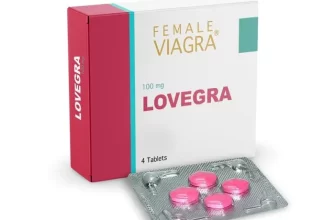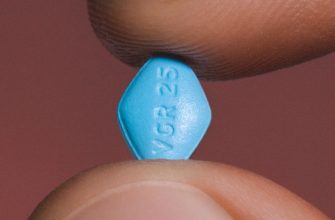The absence of a direct equivalent to Viagra for women stems from biological and psychological factors that influence female sexual arousal. Unlike men, who primarily experience erectile dysfunction due to physiological issues, women’s sexual response is intricately linked to emotional and relational contexts. This complexity complicates the development of a straightforward medication.
Research highlights that women often experience a variety of sexual dysfunctions, including low libido, arousal disorder, and difficulties with orgasm. These issues are not solely rooted in physiological causes, making a one-size-fits-all solution like Viagra insufficient. Studies suggest that addressing psychological components, such as anxiety or relationship dynamics, can be just as critical in enhancing sexual function for women.
Pharmaceutical companies have faced challenges in creating a female counterpart to Viagra. Existing medications, like flibanserin and bremelanotide, target specific problems related to low sexual desire but do not directly mimic the physiological effects of Viagra. This difference indicates that medication alone may not fully resolve the intricacies of women’s sexual health.
Understanding and improving female sexual health requires a multifaceted approach that incorporates therapy, communication with partners, and lifestyle changes. Rather than relying solely on pharmaceuticals, women are encouraged to explore these avenues to enhance their sexual experiences.
- Why is There No Viagra for Women
- Complexity of Female Sexual Response
- Research and Development Challenges
- The Biological Differences Between Male and Female Sexual Dysfunction
- Current Female Sexual Dysfunction Treatments and Their Limitations
- Medications
- Therapeutic Approaches
- The Role of Hormones in Female Sexual Health
- Challenges in Conducting Research on Women’s Sexual Health
- Societal Stigmas
- Limited Funding and Resources
- Variability in Female Sexual Response
- Sociocultural Factors Affecting Women’s Sexual Health Awareness
- Communication and Education
- Access to Resources
- Pharmaceutical Industry Perspectives on Women’s Sexual Treatments
- Future Directions for Female Sexual Enhancement Medications
Why is There No Viagra for Women
Viagra works by enhancing blood flow to the genital areas, primarily benefiting men experiencing erectile dysfunction. Women’s sexual arousal relies on a mix of physiological, hormonal, and psychological factors that Viagra does not address.
Complexity of Female Sexual Response
Women’s sexual health is influenced by emotions, relationships, and hormonal fluctuations throughout their menstrual cycles. Medications aimed at improving female libido, like flibanserin (Addyi) and bremelanotide (Vyleesi), have emerged, but they focus on increasing desire rather than addressing arousal directly.
Research and Development Challenges
Pharmaceutical companies face difficulties in developing effective treatments for women. Many compounds that worked for men do not translate to female physiology. Conducting extensive research on female sexual dysfunction presents unique obstacles, such as stigma and underfunding. Encouragingly, efforts continue to enhance options for women’s sexual health, emphasizing a more comprehensive understanding of female desire and arousal.
Addressing these complexities remains a priority in the pursuit of tailored treatments that genuinely support women’s sexual well-being.
The Biological Differences Between Male and Female Sexual Dysfunction
Research shows distinct biological factors contribute to sexual dysfunction in men and women. Understanding these differences aids in addressing sexual health appropriately.
Testosterone plays a pivotal role in male sexual function, influencing libido, erectile function, and overall sexual satisfaction. In men, low testosterone levels often correlate with erectile dysfunction, making hormonal treatment a viable option.
Women experience sexual dysfunction due to a complex interplay of hormones, including estrogen, progesterone, and testosterone. Hormonal fluctuations during menstrual cycles, pregnancy, or menopause significantly affect sexual desire and arousal. Unlike men, where dysfunction can often be traced to a specific physiological issue, women’s sexual health involves emotional, psychological, and relational factors that complicate diagnosis and treatment.
The physiological response to sexual stimuli also differs markedly. Men typically have a more straightforward arousal process, while women may require more context and emotional connection to achieve the same response. This disparity highlights the need for individualized approaches to treatment.
The table below summarizes key differences in sexual dysfunction between genders:
| Aspect | Men | Women |
|---|---|---|
| Primary Hormone | Testosterone | Estrogen, Progesterone, Testosterone |
| Common Issues | Erectile dysfunction, Low libido | Low libido, Arousal difficulties, Pain during intercourse |
| Causative Factors | Physiological, Hormonal | Hormonal, Psychological, Relationship dynamics |
| Treatment Approaches | Hormone replacement, Medications | Hormonal therapies, Psychological counseling, Sexual therapy |
Addressing sexual dysfunction in women requires a holistic approach that encompasses physical health, emotional wellness, and relationship satisfaction. Tailored interventions are essential for effective treatment.
Current Female Sexual Dysfunction Treatments and Their Limitations
Various treatments exist for female sexual dysfunction, yet many have limitations that can hinder their effectiveness. Understanding these options helps in making informed decisions.
Medications
- Flibanserin (Addyi): Approved for hypoactive sexual desire disorder, it is taken daily. Side effects include dizziness and nausea, and its effectiveness can vary, leading to only modest improvements for some women.
- Bremelanotide (Vyleesi): This on-demand injectable medication targets sexual desire. Hormonal fluctuations and timing of injections can complicate its use, and side effects may include nausea and headache.
- Hormone therapy: Estrogen and testosterone therapies can help those with hormonal imbalances. However, risks associated with long-term use, such as cardiovascular issues, require careful consideration and medical supervision.
Therapeutic Approaches
- Cognitive Behavioral Therapy (CBT): This therapy addresses psychological barriers to sexual function. While effective for some, it requires a qualified therapist and commitment, which may be barriers for many.
- Pelvic Floor Physical Therapy: This method improves pelvic muscle function. It may take time to see results, and not all clinics offer specialized training in this area.
In conclusion, the variety of treatments for female sexual dysfunction reflects diverse needs. However, challenges related to medication side effects, hormonal therapy risks, access to therapy, and personal willingness often limit their success. Continuous dialogue with healthcare providers remains essential for navigating these options.
The Role of Hormones in Female Sexual Health
Hormones significantly influence female sexual health. Estrogen and progesterone, primarily produced by the ovaries, regulate menstrual cycles and impact libido. A balanced level of these hormones enhances sexual arousal and responsiveness. During different life stages, such as menstruation, pregnancy, or menopause, hormone fluctuations can lead to variations in sexual desire and function.
Testosterone, although often associated with males, also plays a role in women’s sexual health. It is produced in smaller amounts in females and contributes to libido. Low testosterone levels may lead to decreased sexual interest or arousal. Consulting a healthcare provider for hormone assessment can identify potential imbalances affecting sexual function.
Thyroid hormones are another critical factor. Hypothyroidism, a condition where the thyroid gland does not produce enough hormones, can negatively affect libido and sexual excitement. Treating thyroid disorders can restore sexual desire in affected women.
Stress and lifestyle choices impact hormone levels as well. High-stress levels raise cortisol production, which can diminish sexual interest. Regular physical activity and relaxation techniques can help manage stress and promote better hormonal balance, enhancing sexual well-being.
In summary, understanding and managing hormone levels can lead to improved sexual health for women. Regular check-ups and open communication with healthcare professionals can aid in identifying and treating hormonal issues effectively.
Challenges in Conducting Research on Women’s Sexual Health
To effectively understand women’s sexual health, researchers must address several significant barriers that complicate studies in this field.
Societal Stigmas
Societal attitudes towards female sexuality often create reluctance to discuss sexual health openly. Women may feel embarrassed to participate in studies or report issues honestly. This can skew data and limit sample sizes. Overcoming stigma involves creating safe and supportive environments where women feel comfortable sharing their experiences.
Limited Funding and Resources
Research on women’s sexual health frequently receives less funding compared to studies on men’s health. This discrepancy limits the scope and number of studies conducted. Advocating for increased funding and promoting awareness about the importance of this research can help address these limitations.
- Encourage institutions to prioritize funding for women’s health initiatives.
- Highlight the need for diverse studies that cover different aspects of women’s sexual health.
Furthermore, researchers often lack access to comprehensive data regarding women’s health issues. Building partnerships with women’s health organizations can provide the necessary insights and resources for effective studies.
Variability in Female Sexual Response
Women’s sexual health is influenced by an array of factors, including hormonal changes, psychological state, and relational dynamics. This variability makes it challenging to create universally applicable conclusions from studies. Researchers must consider diverse populations and contexts to gather more representative data.
- Conduct studies across different demographics to capture a wide range of experiences.
- Utilize multidisciplinary approaches that consider biological, psychological, and social factors.
Increasing the inclusion of women’s voices in research, whether through interviews or focus groups, can enrich findings and lead to better understanding of the complexities involved in female sexual health.
Sociocultural Factors Affecting Women’s Sexual Health Awareness
Women should actively seek education and resources related to their sexual health. Cultural stigmas often create barriers, making it difficult for women to discuss their needs or seek help. Healthcare providers should foster open communication to break these barriers.
Communication and Education
Educational programs tailored specifically for women play a significant role in shaping their understanding of sexual health. Addressing myths and misconceptions through workshops and seminars can empower women to take charge of their sexual wellness. Encourage discussions in community settings to normalize the topic.
Access to Resources
Access to healthcare is critical. Advocacy for better healthcare policies can improve services for women. Increasing the availability of women-centric resources, such as support groups and informational sessions, promotes awareness and supports women’s health initiatives. Encourage local organizations to collaborate in providing these services to create an informed community.
Pharmaceutical Industry Perspectives on Women’s Sexual Treatments
Pharmaceutical companies prioritize the development of treatments that address women’s sexual health issues, focusing on areas like libido and arousal. Investment in research and clinical trials specifically targeting female sexual dysfunction has increased. However, companies encounter several challenges, including the complexity of female sexuality and the influence of social stigma.
Market studies indicate that women experience sexual dysfunction at rates comparable to men, yet the options available remain limited. Companies analyze consumer demand to strategize and invest in potential treatments. Their findings reveal a significant gap in products that enhance sexual desire and satisfaction among women. This gap suggests an opportunity for industry growth, yet societal and medical perceptions surrounding female sexuality continue to hinder progress.
Regulatory hurdles present another challenge. Developing drugs for women’s sexual health often requires navigating intricate approval processes, reflecting a more cautious approach compared to medications for male sexual dysfunction. Despite these obstacles, some companies are committing resources to innovative therapies like flibanserin (Addyi) and bremelanotide (Vyleesi), designed to address hypoactive sexual desire disorder in women.
Collaboration with healthcare providers also plays a role in shaping product development. Companies engage in dialogue with doctors to understand patient needs and clinical outcomes. Feedback from healthcare professionals allows for better-targeted products and informs educational initiatives that aim to destigmatize discussions on women’s sexual health.
Continued advocacy and research are necessary to bridge the gap in female sexual health treatments. Pharmaceutical companies should remain focused on the unique factors influencing women’s sexual well-being, committing to transparency and inclusivity throughout the development process. By doing so, they can foster an environment that encourages innovation and meets the needs of women seeking effective solutions in sexual health.
Future Directions for Female Sexual Enhancement Medications
Research focuses on developing medications that address specific aspects of female sexual health, such as arousal and desire. Current studies explore compounds like Bremelanotide (Vyleesi) and its potential to enhance libido within specific populations.
Innovative approaches include hormone therapy targeting estrogen and testosterone levels, which play significant roles in sexual function. Clinical trials evaluate the safety and efficacy of these treatments in postmenopausal women and those with hormonal imbalances.
Additional investigations into non-hormonal options examine the use of botanical supplements and natural ingredients. Products containing maca root or ginkgo biloba show promise and need further research to substantiate their claims.
Focus on personalized medicine represents another direction. Tailoring treatments based on individual hormonal profiles and personal health histories could lead to targeted solutions for women with distinct needs.
Collaboration between researchers, healthcare providers, and pharmaceutical companies encourages development and accessibility of effective treatments. Education on female sexual health remains crucial for destigmatizing these issues and fostering an environment conducive to open discussions.
As more research emerges, regulatory bodies may adapt approval processes, facilitating faster access to new therapies. A comprehensive understanding of female sexual health will guide future innovations, offering women informed choices for enhancing their sexual well-being.








